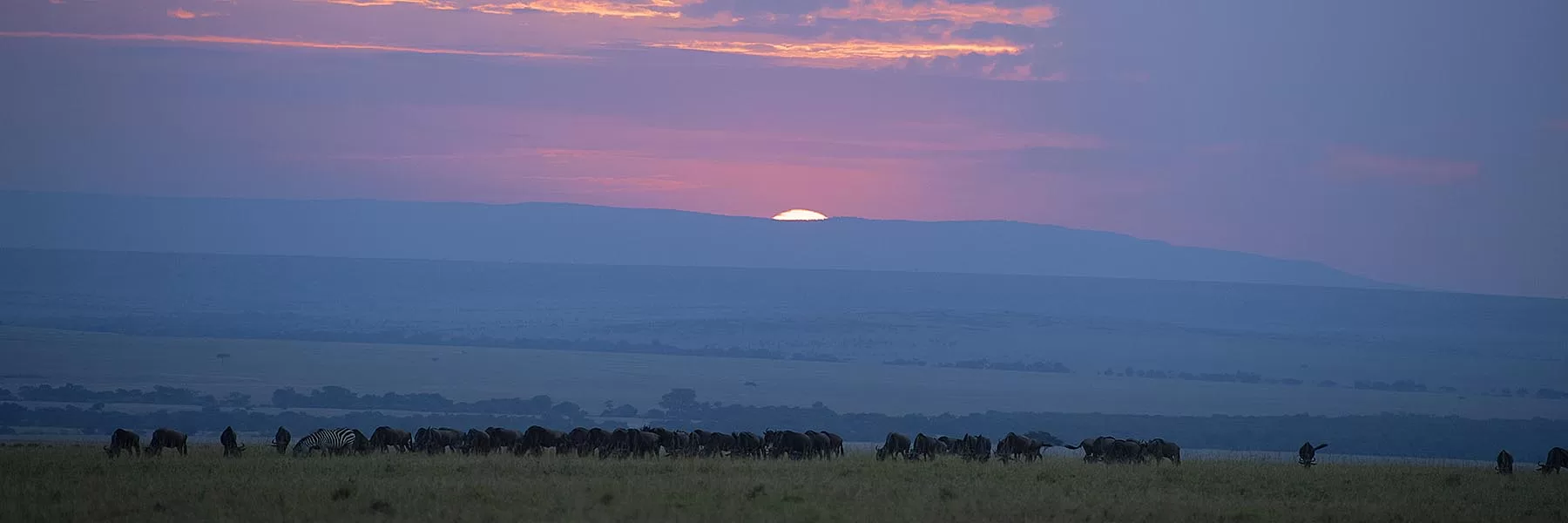Wildebeest calving is an annual phenomenon that occurs in the Ndutu plains in the south of Serengeti in Tanzania every year, around January and February. Nowhere else on the planet, you can expect to see such a large congregation of animals, the experience is something that cannot be described in words. Calving is the first stage of the annual great migration in the Mara-Serengeti plains, and to understand calving first we need to understand the great migration.
The Great Migration
The great migration is a year-long cyclical phenomenon where millions of wildebeests and zebras move continuously migrate through the great plains of the Mara-Serengeti ecosystem in search of greener pasture. This is touted as the greatest spectacle of the natural world as nowhere else on the planet one can see such a mass movement of animals. It begins from the Ndutu Plains south of Serengeti in Tanzania, where millions of them give birth during January-February. That is called the calving season, which we will elaborate in a while. Post that the herds start moving northwards from March-April onwards and by May-June reach the western side of Serengeti and cross the Grumeti River. Then in July-August, they cross over to the Masai Mara in Kenya through the sand river, and then the Mara river. By September-October, they start coming back to Serengeti, this time through the eastern corridor, and by January-February they again reach back the Ndutu plains. This circle of life repeats every year. No one knows how to explain this grand phenomenon except knowing that the movement happens as per their perception of greener pastures and better food availability. To undertake this long journey every year, they also risk their lives multiple times when they cross many crocodile-infested rivers and become the food of crocodiles. On the banks often lion pride or leopards are waiting for them. Still, as a group, they undertake this journey, year after year.
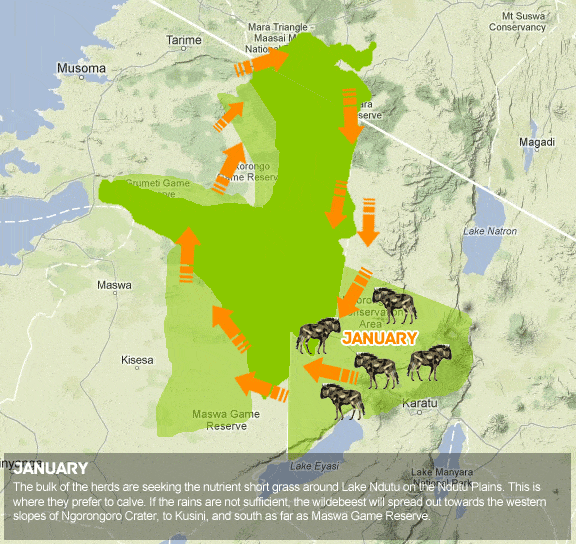
Migration animation
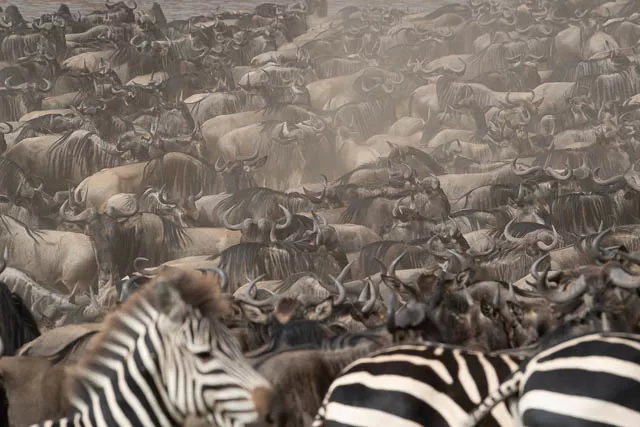
The herds of Ndutu
Ndutu Plains & Calving
The Ndutu plains in the south of Serengeti turn lush green after the rainy season and provide a beautiful backdrop to the Wildebeest calving, which results in several hundred thousand calves being born. About 8,000 wildebeest are born every day during January and February in the Ndutu plains. The Ndutu region, where this calving takes place, is the meeting point of Ngorongoro Conservation Area and Serengeti National Park. Rolling grasslands, filled with alkaline lakes attract numerous species of animals and birds. Ndutu region is the best place to truly experience the gigantic scale of the migration- the herds return here to graze in December, calving takes place from January to February, and then the herds depart towards the North in April. The inviting grasslands of Ndutu also attract zebras and gazelles, that feast on grass that’s less appetizing to the baby wildebeest. In total, about 2 million different species, composed mainly of wildebeest, zebra, Thomson gazelle, and eland take part in this migration. The prime spot to view the diverse wildlife during this season is Lake Ndutu. Huge herds assemble here from December to April to graze the lush green grass and to calve. At that time the Ndutu Plains is full of big cat action as the pride of Lions and different Cheetahs target that place in search of food.
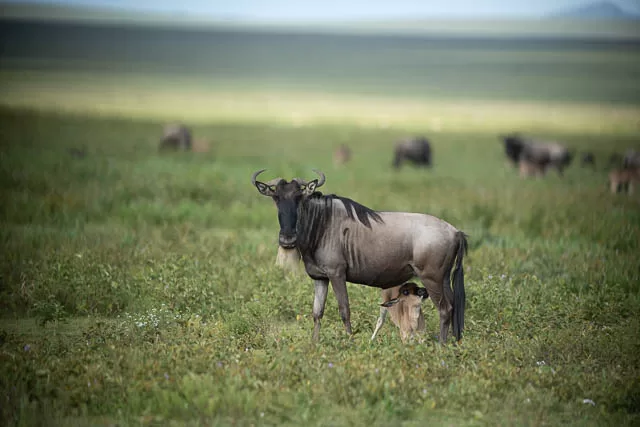
Newly born wildebeest cub
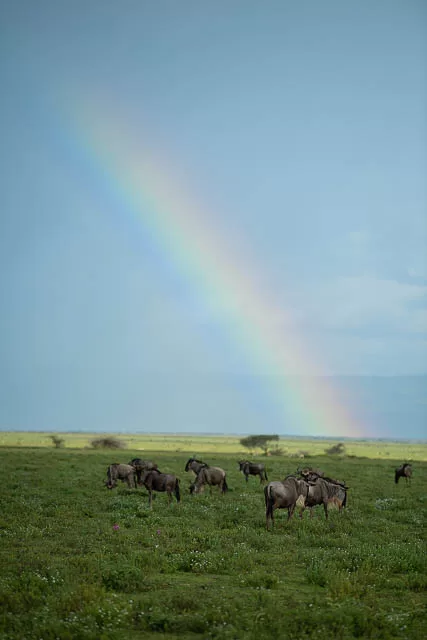
Plains of Ndutu
Predators
During calving season, predators like Lions, Cheetahs, Caracal, Serval, and Hyena show up in large numbers to prowl and capitalize on any opportunity to kill the baby wildebeest. Often, female wildebeest retreat to the short grass plains where they form a blockade to protect the birthing mothers, as well as the younger and vulnerable baby wildebeest. The young baby wildebeest, however, are quick learners; they can keep up with the herd within three days of birth. Hence, most of them survive the assault from predators. A trip to Serengeti during this time treats the visitors to a lot of action- one can watch the Darwinian theory- “Survival of the fittest” play out in front of their eyes. The more agile and experienced predators- cheetahs, lions, and leopards deliver excellent predator-prey action and make for some excellent photography. The calving demonstrates Nature’s purposeful selection of the timing; both predator and prey have similar birthing timings to ensure maximum chances of survival.
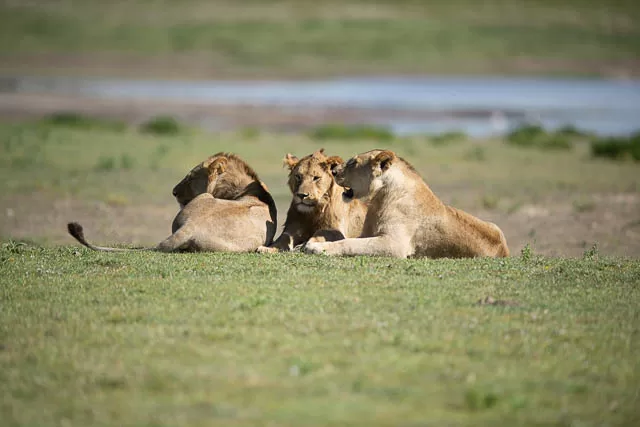
Waiting for their food
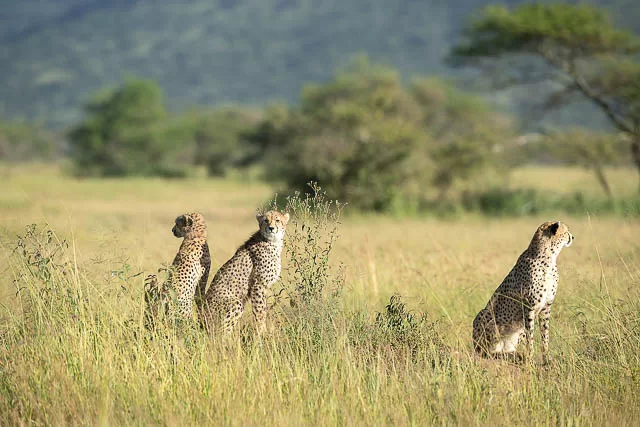
Cheetah family in Ndutu
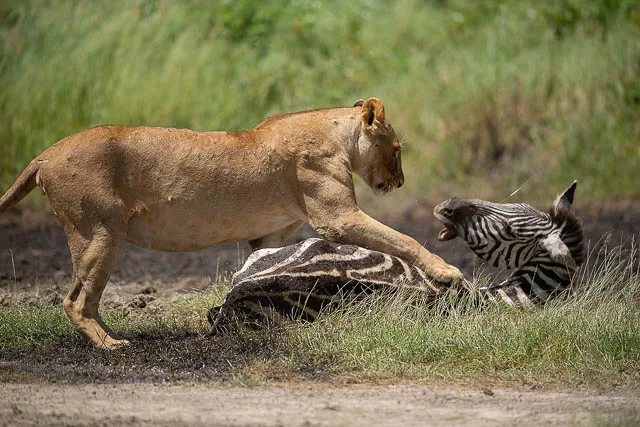
Lion on a zebra kill
Accommodation
Ndutu region is accessible by road from Arusha and is part of the Ngorongoro conservation area (not to be confused with Ngorongoro crater). This place is around a six-hour drive away from Arusha. Ndutu has its own airstrip near Ndutu lake, which has regular flights from Arusha. You can follow the herds throughout the year by staying in mobile migration camps. These properties are tents made out of wood and canvas and offer a true African experience. Olakira Camp and Ubuntu Camp are close to the Ngorongoro Conservation Area and offer eight luxurious guest tents with en-suite bathrooms and private verandas. The other option is to get a permanent lodge, like the Mwiba Lodge in the Mwiba Wildlife Reserve in southern Serengeti. Lavishly furnished double suites with great bathrooms and large private decks offer a stunning view of the landscape and a close view of the calving. The lodges here are surrounded by lush botanicals and acacia trees, in addition to numerous freshwater springs. To plan for this grand spectacle of nature, you can look at our wildebeest calving group tour, or can customize this and take a private tour.
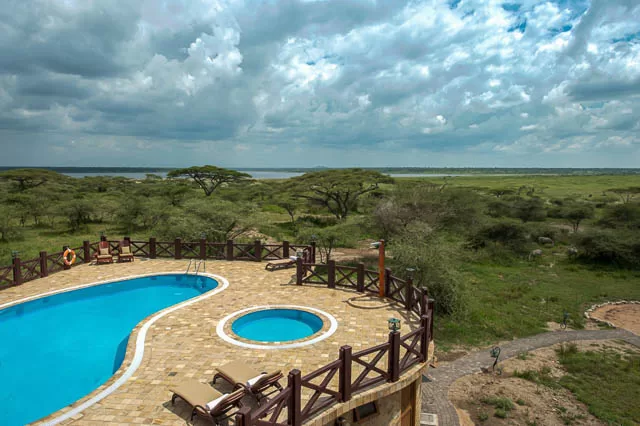
Views from Ndutu lodge
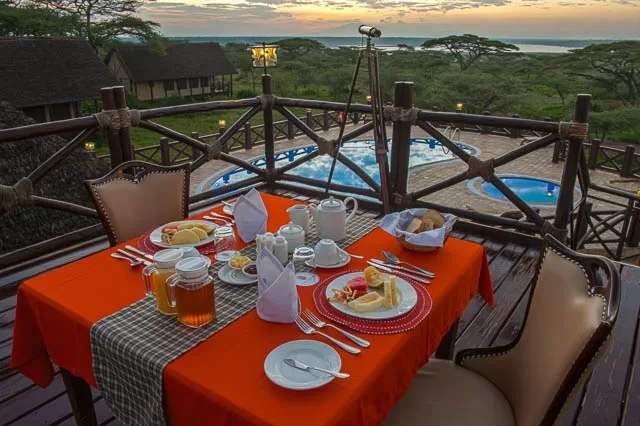
Lodge in Ndutu
Activities
The best way to enjoy this wonderful phenomenon is from the vantage of open-sided 4×4 vehicles. Tours usually have two rides per day- one in the early morning and the other during the afternoon. You can also venture out on walking safaris with the Tanzanian Park Rangers, for a closer encounter with nature. Another popular activity you can enjoy here is a village visit- visit a local community, accompanied by an expert guide to learn about the culture and traditions of the Masai Mara communities. You can also venture out to central Serengeti, an hour and a half drive from Ndutu to enjoy hot air ballooning. One can also visit Olduvai Gorge, one of the most important paleoanthropological sites in the world, where the earliest evidence of the existence of human ancestors was discovered. A trip to Olduvai includes a visit to the stunning ravine, the local museum, and the nearby dunes of volcanic ash called Shifting Sands.

Olduvai Gorge
If you loved reading this story, then subscribe to our blog here (it will ask to verify your email) to get inspiring travel stories and trivia delivered to your email. Stories about wildlife trivia, cultural experiences, curated luxury hotel lists, underrated places to travel, polar journeys, and much more.


